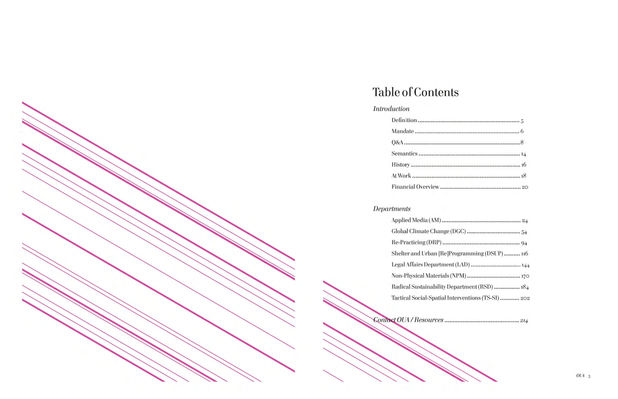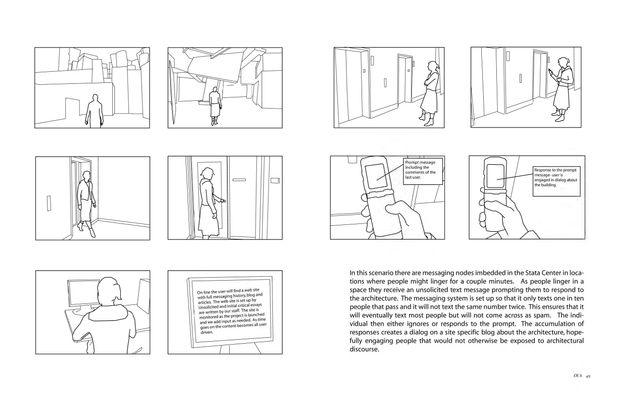
Unsolicited Architecture
2007
Unsolicited Architecture was mentioned for the first time in the opening editorial of the new magazine Volume, founded in 2005. It pointed out architecture’s capacity to reclaim its autonomy, this time understood not as a free zone for architectural experimentation, but as an exercise in developing an ethical agenda of its own, uncompromised by market forces or client caprices. The idea was further developed in a studio taught at MIT in 2007, run as a hypothetical Office for Unsolicited Architecture, later renamed Unsolicited Studio, testing what happens if architecture has to do without one or more of its traditional cornerstones: a site, a client, a program, a budget. Part of the team concentrated on exemplary unsolicited projects, others on the strategic and managerial aspects of such a practice. The results and the underlying manifesto were published in Volume 14. Between 2010 and 2012 the Studio continued as part of the NAi program, actively proposing strong architectural solutions to societal issues, and arranging matchmaking sessions to find the right “clients” for those solutions.


.png)
Office for Unsolicited Architecture (OUA)
an architecture of action, rather than re-action
As it is practiced today, architecture is all too often a responsive profession. Architects take direction from their clients, providing solutions to a set of problems and desires described in a project brief. While this sort of responsive architecture is, admittedly, the most pragmatic way of working (since Financial remunerations are secured in advance), it affords little agency to the architect. Instead, clients alone determine architecture’s agenda.
The Office for Unsolicited Architecture proposes an alternative: a new form of practice that pro-actively seeks out new territories for intervention, addresses pressing social needs and takes advantage of emerging opportunities for architecture. All of this is motivated by a desire to fight interpassivity, self-doubt and perceived (or real) marginalization of architects while hunting for an architecture that is interesting, innovative, subversive, creative, transgressive, reflective, sustainable, attainable, idealistic, profitable and above all forever unsolicited.


The Office for Unsolicited Architecture
founded by Ole Bouman
Management
Andrea Brennen – Strategist
John Snavely – Financial consultant
Ryan Murphy – Design advisor
Concept development
Andrea Brennen and John Snavely


Unsolicited, or: The New Autonomy of Architecture
editorial, volume 2007#4

Remember when people talked about the death of this and the death of that. We attended a lot of funerals. Michel Foucault claimed Man had died. Roland Barthes asserted that the author had died. The novel, authenticity, progress, enlightenment, you name it and some philosopher talked about it at the memorial service. And although people were still living, books were still written and progress was still made, it was all about a culture of living deaths. Yet one with no past and no future because history too was declared dead.
Studio for Unsolicited Architecture
experiment project initiated by NAI
The Studio for Unsolicited Architecture (SUA) is an experiment set up by the NAI. The studio was launched at the end of 2010. In the light of the difficulties facing the architecture profession. The NAI concluded that many potentially outstanding ideas and designs were simply being disregarded, mainly because the plans’ relevance and value hasn’t been communicated clearly. With the Studio for Unsolicited Architecture, the NAI intends to provide a platform for innovative, experimental ideas and to help make the plans ‘market ready’. Three plans are selected and nurtured over a 6-month period. During this time, the designers develop and refine their project, and engage with stakeholders and market parties. The plans to be adopted are chosen from the submissions – plans and ideas initiated and defined by the designers themselves, with the underlying aim of developing projects to address urgent social and spatial issues. Some of the questions being handled are: how can we tackle the issue of vacant premises? How can we encourage more people to take part in sports in the city? How can we use large-scale infrastructure to improve our country’s biodiversity? So far, there have been three rounds in which teams have been able to present their work.





































